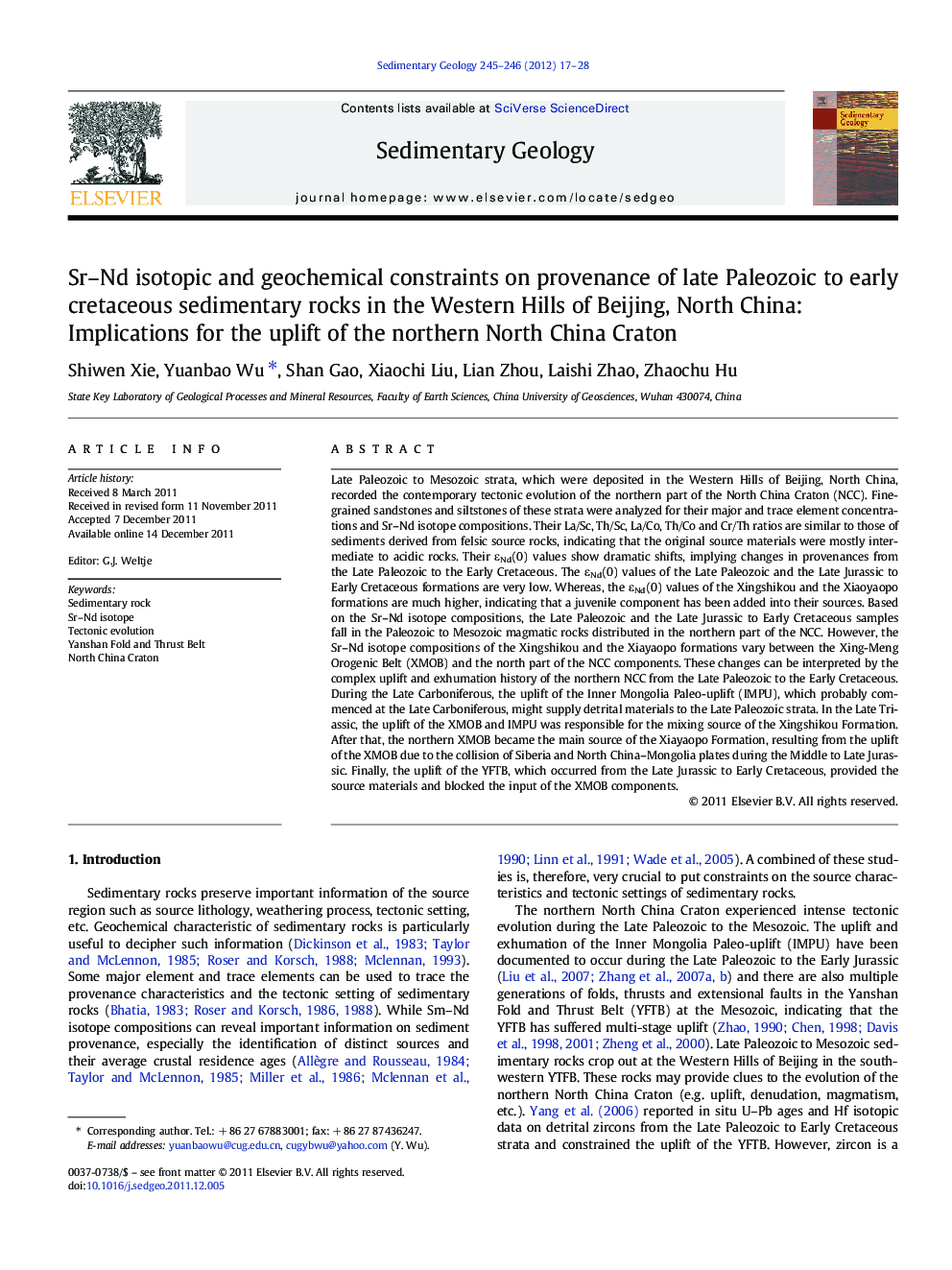| کد مقاله | کد نشریه | سال انتشار | مقاله انگلیسی | نسخه تمام متن |
|---|---|---|---|---|
| 4689871 | 1636098 | 2012 | 12 صفحه PDF | دانلود رایگان |

Late Paleozoic to Mesozoic strata, which were deposited in the Western Hills of Beijing, North China, recorded the contemporary tectonic evolution of the northern part of the North China Craton (NCC). Fine-grained sandstones and siltstones of these strata were analyzed for their major and trace element concentrations and Sr–Nd isotope compositions. Their La/Sc, Th/Sc, La/Co, Th/Co and Cr/Th ratios are similar to those of sediments derived from felsic source rocks, indicating that the original source materials were mostly intermediate to acidic rocks. Their εNd(0) values show dramatic shifts, implying changes in provenances from the Late Paleozoic to the Early Cretaceous. The εNd(0) values of the Late Paleozoic and the Late Jurassic to Early Cretaceous formations are very low. Whereas, the εNd(0) values of the Xingshikou and the Xiaoyaopo formations are much higher, indicating that a juvenile component has been added into their sources. Based on the Sr–Nd isotope compositions, the Late Paleozoic and the Late Jurassic to Early Cretaceous samples fall in the Paleozoic to Mesozoic magmatic rocks distributed in the northern part of the NCC. However, the Sr–Nd isotope compositions of the Xingshikou and the Xiayaopo formations vary between the Xing-Meng Orogenic Belt (XMOB) and the north part of the NCC components. These changes can be interpreted by the complex uplift and exhumation history of the northern NCC from the Late Paleozoic to the Early Cretaceous. During the Late Carboniferous, the uplift of the Inner Mongolia Paleo-uplift (IMPU), which probably commenced at the Late Carboniferous, might supply detrital materials to the Late Paleozoic strata. In the Late Triassic, the uplift of the XMOB and IMPU was responsible for the mixing source of the Xingshikou Formation. After that, the northern XMOB became the main source of the Xiayaopo Formation, resulting from the uplift of the XMOB due to the collision of Siberia and North China–Mongolia plates during the Middle to Late Jurassic. Finally, the uplift of the YFTB, which occurred from the Late Jurassic to Early Cretaceous, provided the source materials and blocked the input of the XMOB components.
Journal: Sedimentary Geology - Volumes 245–246, 1 March 2012, Pages 17–28